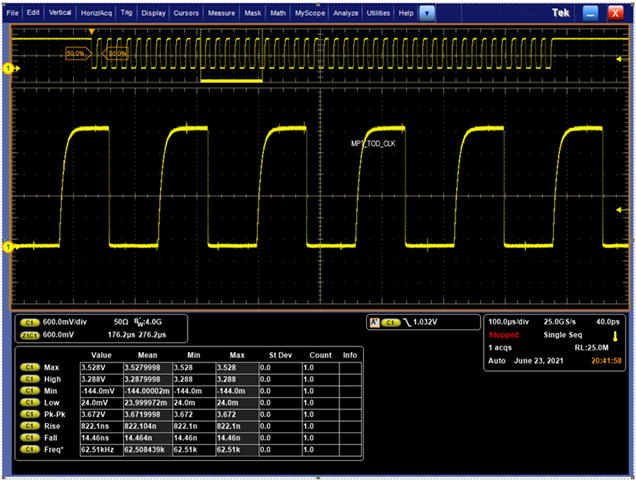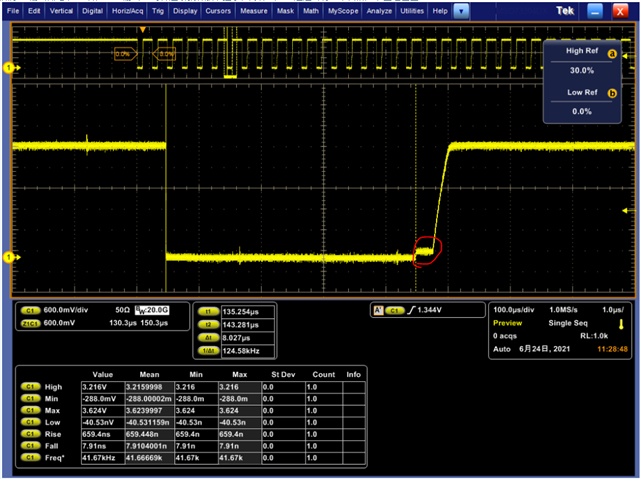Other Parts Discussed in Thread: UCD9090A, TCA9803
Hi Team,
Customer meets clock stretching phenomenon under below system architecture. The setup I2C frequency is 62.5kHz, but the frequency is stretched to 41.6kHz after passing TCA9800. I notice TCA9800 has clock stretching functions. Is that possible to turn off TCA9800's clock stretching function here? Thanks.

Best,
Stanley



 --- 62.5khz, normal one
--- 62.5khz, normal one --- 41.67kHz, frequency pulled down one.
--- 41.67kHz, frequency pulled down one.